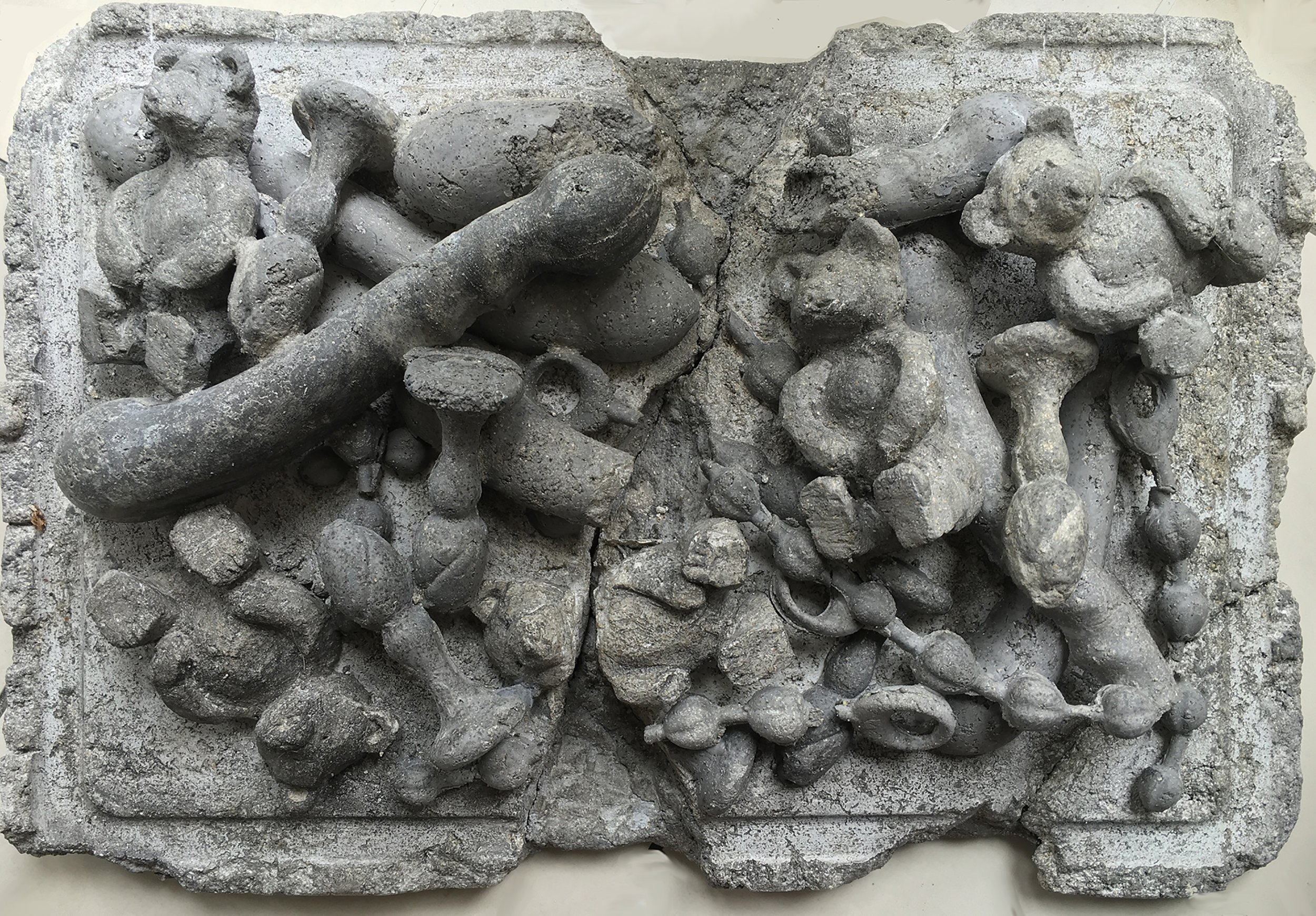Frames of War
Human Rights Series, Vermiculite, plaster, Jesmonite pigment & MDF, Six frames, each 70 x 50 x 5 cm, Artist’s Collection
Friezes seem to represent an ancient reportage about the oppression of the overpowered and the glorification of war. This work is a modern take on an ancient frieze inspired by the Parthenon galleries at London’s British Museum. The Parthenon was built at a time of economic, political, and artistic prowess, often using slave labor. Six different frames use objects with contextual links to represent the six different aspects of war atrocities as defined by the United Nations. The frames were made from the lid of a storage box, a deliberate reference to a modern container for objects. The objects were piled onto the frame in a haphazard way, referencing both the horrific piles of objects taken from Jews at the Nazi gas chambers, and the chaos of bones found in mass graves. The first time genocide was recognized as an independent crime under international law was in 1948 (United Nations Treaty 1021); rape and ethnic cleansing were not included. Sexual violence in conflict was only acknowledged as a war crime in 2016 in the British government’s paper: House of Lords Sexual Violence in Conflict Committee (HL123).
The Human Rights Series offers a voice for those treated as less than human, and reflects resurfaced experiences of my earlier career as a young medic working at the Khao-i-Dang refugee camp in Cambodia following Pol Pot’s brutal regime.
Bones combined with weapons reflect the tragic loss of human life in war.
The combination of sex toys and teddy bears reflects the sexual exploitation of children in war, terrorism, and forced child marriages.



